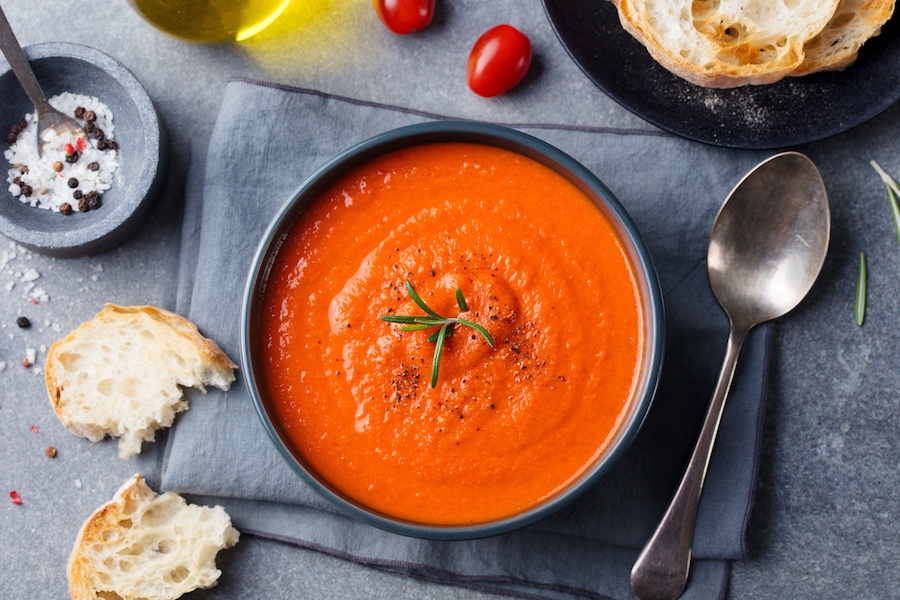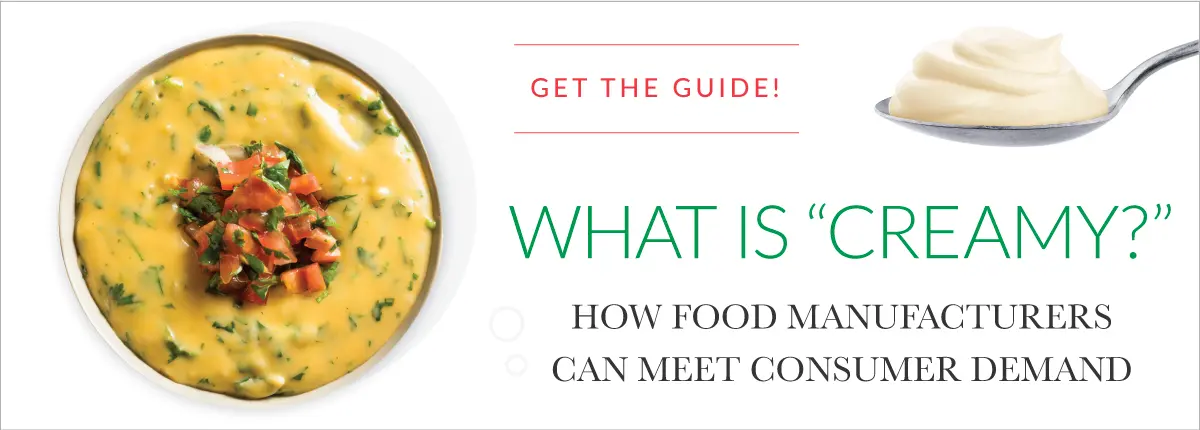 The popularity of the traditional soup and salad bar in restaurants has slowed in recent years, but that doesn’t mean these staples in the American diet have seen their day. An expected CAGR of 2.9% for the soup market through 2024 still indicates growth, and the category overall still represents a significant market share.
The popularity of the traditional soup and salad bar in restaurants has slowed in recent years, but that doesn’t mean these staples in the American diet have seen their day. An expected CAGR of 2.9% for the soup market through 2024 still indicates growth, and the category overall still represents a significant market share.
While soup and salad sales are lagging at some restaurant chains, others are getting creative with their offerings and capturing the attention of patrons. Let’s take a look at current soup and salad trends and how innovative food manufacturers and restaurants are appealing to consumers.
From Soup to Nuts — 2020 Soup Trends
Consumers don’t necessarily consider soup to be a full meal; typically, people prefer to consume soup as an appetizer or snack. As such, instant grab-and-go soups are expected to dominate the soup market in the next few years. Because they’re easy to prepare, they align perfectly with other food trends that cite convenience as a main driver of sales.
In tandem with ease of preparation, however, food companies are also releasing products in response to consumer demand for improved taste and quality ingredients. Combining convenience and quality have forced some food producers to reformulate products to provide appealing options for these health-conscious consumers.
RELATED: Formulating Soups with Clean Label Dried Yogurt
The key to increasing soup sales is creating enticing flavor profiles in addition to traditional pairings. Patrons are becoming more adventurous when it comes to trying new flavor combinations.
Asian-inspired dishes have been in vogue for a couple of years, perhaps in response to the popularity of the Vietnamese soup, Pho. More recently, African flavors along with influences from the Middle East and Western Europe are showing up in the food and beverage industry. Considered rich and earthy, ingredients like peanuts, onions, tamarind, tomatoes, exotic grains and more lend themselves perfectly to hearty soups. A drizzle of chili-infused olive oil or a basil pesto sauce not only adds visual appeal but another layer of flavor to delight the taste buds.
Creamy soups like tomato bisque, roasted cauliflower, broccoli, mushroom, zucchini, red pepper, pumpkin, and just about any vegetable you can puree are also on trend. Health-conscious consumers continue to consider the amount of fat and calories contained in the food they eat, so formulating these applications with improved nutrition can increase their appeal even further.
Time to Ditch Salad?
Not so fast. Salads still have their place on menus; they may just look a little different. Among the top salad trends are pickled vegetable salads — a nod to the popularity of fermented foods. A simple toss of daikon radishes, cabbage, onions, serrano peppers and some julienne ginger in a marinade of rice wine vinegar and sweetener can be placed in the refrigerator for an hour and served.
Somewhat in the salad realm are poke bowls, traditionally consisting of poke (diced raw fish) served over rice and topped with vegetables and umami-rich sauces. Numerous versions of this trending dish include serving it up as a salad bowl and replacing the rice with healthier greens. Adding grains to traditional salads, however, continues to be on trend, with quinoa, farro and bulgar wheat being featured on restaurant menus.
A main factor that determines a salad’s appeal remains the sauces and dressings. As with soups, dressings are being influenced by the popularity of African and Asian flavors, with ginger, chili, avocado and chipotle gaining ground.
While new flavors continue to make the rounds, the most popular salad dressing that continues to top sales every year is creamy ranch dressing.
RELATED: Ranch Dressing Recipe Without Eggs
To maximize any salad dressing’s appeal, food manufacturers must cater to the growing number of consumers who increasingly ask for nutritional information and demand clean labels. Many restaurants fail to offer unique low-fat options with minimal ingredients on their menus for fear of compromising flavor and texture, but finding the right combination of flavor, mouthfeel and nutritional benefits could provide major opportunities.
Tips for Improving Soup and Salad Sales
Increasing soup and salad sales not only requires staying on trend with unique flavor profiles; it requires providing a wider variety of healthy options. An effective strategy for food manufacturers is reducing or replacing high-fat traditional ingredients and emulsifiers such as cream, butter, eggs and oil in dressings and soups with a lower fat alternative.
However, many alternatives can negatively impact texture, compromise flavors, or introduce artificial ingredients or modified starches that don’t lend themselves to clean label trends. An innovative solution is replacing traditional emulsifiers and fresh dairy ingredients with all-natural Grande Bravo® functional whey protein.
Consumers won’t notice the difference in the consistency and flavor in your soups and salad dressings, but because of the improved nutritional benefits, you might just want to tell them anyway.
Reach out to the food scientists at Grande Custom Ingredients Group to explore how including Grande Bravo or another of our innovative all-natural products in your custom formulation can set the stage for increased sales and promotional opportunities. Also check out the Guide to Creamy Applications below to discover tips and ingredient solutions for creating the creamy consistency consumers love.





